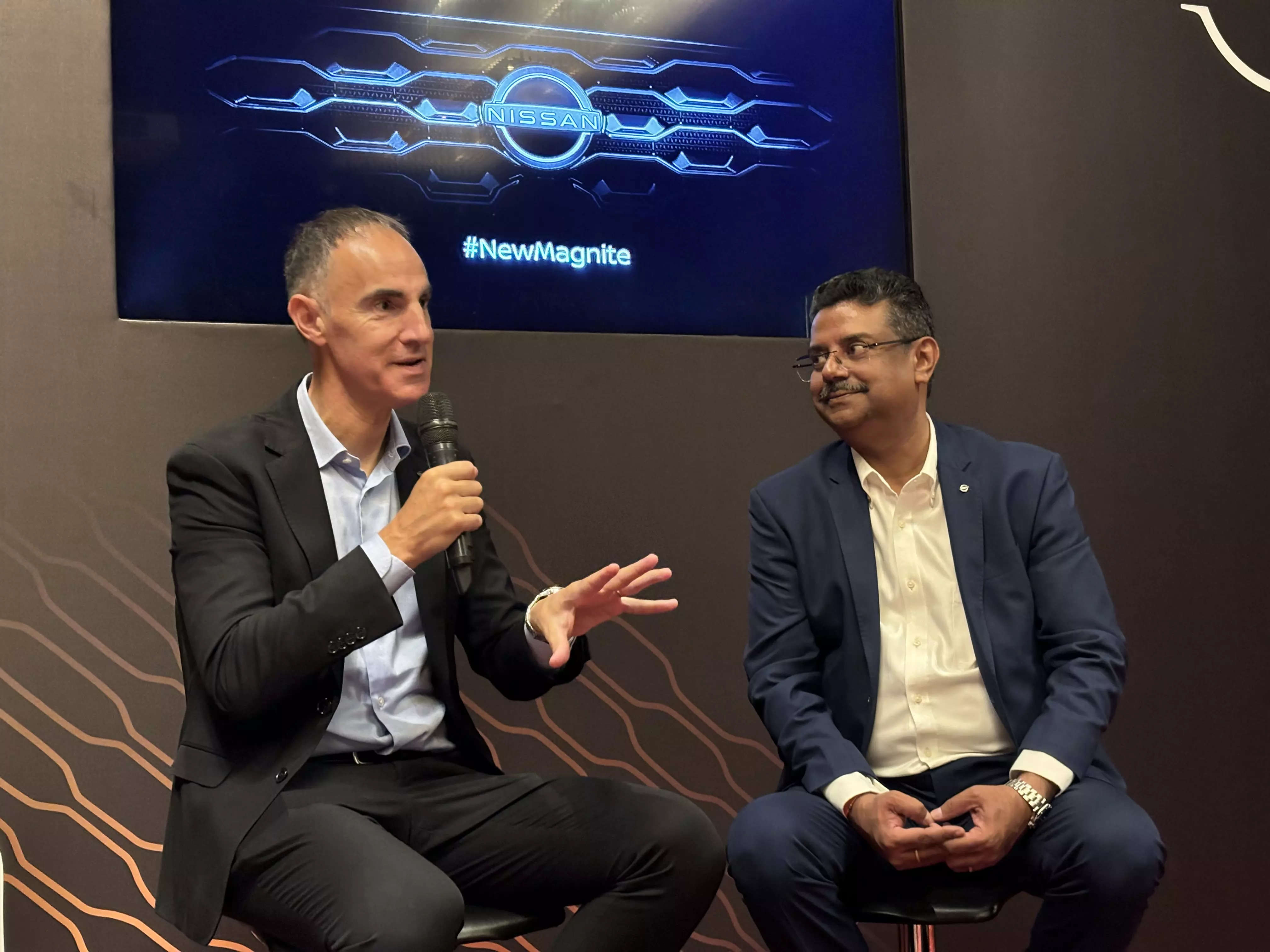
New Delhi: Magnite has played a critical role in the success of Nissan India, said a top company official on Friday.
“I will not say we are not successful in India– we are really successful as Magnite has changed the game for us. Before Magnite, I agree we were facing difficulties,” Frank Torres, Divisional Vice President of AMIEO Regions & President-Nissan India Operations, told the reporters when asked about the company’s stagnant share in the domestic market.
He was speaking on the sidelines of the launch of Magnite facelift version, which is introduced at a price starting from INR 5.99 lakh (ex-showroom).
Nissan entered India in 2005 and will complete two decades in the country next year. Currently the Japanese automaker sells two models in the portfolio– Magnite and X-Trail– and holds just over 1% market share in the domestic passenger vehicle industry. Earlier, ETAuto reported about Nissan’s trajectory in the Indian market.
“We want to focus on SUV strategy, Japanese DNA, plenty of technology, and build on these assets. Globally, India ranks in top 15 markets for Nissan Motor Corporation. With the plan of brand resurgence, India will be among Top 10 countries by 2026-end,” Torres said.
Product Plan
As part of its mid-term global business plan ‘The Arc’, Nissan wants to launch three all-new models in India and become a hub for exports. The new models will include two mid-size SUVs including a five-seater and a seven-seater, and one electric SUV in the mass market segment. With this, the company will sell five models in the country by 2026-end, and aims to garner a market share of 3%.
“We want to replicate the success of Magnite in the C-SUV and EV segment with new models,” Torres said.
Without sharing much details on the expected price range of the EV, Torres noted that it will be an “affordable” model. “We are working on the ecosystem as well, not just the aggressive price point.”
Talking about the government’s aggressive push on EVs, he stated that even though he is confident of the adoption rate growing in the country, it is difficult to achieve 25% penetration by 2030. “We are sure India will be faster, but our experience in Europe is that to grow from 2% to 25% adoption in some of the countries took more than 15 years.”
Currently, EV penetration in the domestic passenger vehicle market stands at just over 2%.
Sales Volume Target
Last year, Nissan along with its alliance partner Renault announced an investment of USD 600 million (INR 5300 crore) to build a total of six new models (three for each company) in India at their plant in Chennai.
Nissan said it has invested an additional USD 100 million to strengthen India as an export hub for its compact SUV Magnite. The carmaker already exports the model to 20 countries, and now it wants to move to 65 markets. “India is at the center of the plan.”
The carmaker looks at growing domestic and export sales close to 1 lakh units each by 2026.
Multi-fuel Technology
In the transition from ICE to EVs, carmakers are offering multiple powertrain options including CNG, hybrid, and flex-fuel. This comes in line with complying to the third phase of Corporate Average Fuel Economy (CAFE-III) norms proposed for the country from 2027 onwards. These norms impose a limit on carmakers’ entire fleet and set a limit on the total amount of carbon dioxide produced by its vehicles in a year.
As Nissan readies up its EV, the company is also contemplating on other powertrain technologies. “We think there will be a combination of powertrains in the future. We are studying hybrids and CNG technology for India,” Torres said.
CBU strategy at play
In a bid to strengthen the brand presence in the country, Nissan wants to showcase its advanced technologies by bringing in models via Completely Built Units (CBU) route. “What’s most important for us is the resurgence of the brand while demonstrating the best technologies. CBU route is helping us demonstrate that,” Saurabh Vatsa, MD, Nissan Motor India, said.
The company offers the X-Trail model in India as a CBU. It has currently rolled out 30 of the 150 units to dealerships.
“In showrooms where the X-Trail is on display, we have noticed a significant increase in the conversion rate of Magnite sales. Customers see the X-Trail and are impressed that it is part of the same brand. This was the role of the CBU strategy; not necessarily to drive large volumes but to elevate the brand’s aspiration and image,” he said.















